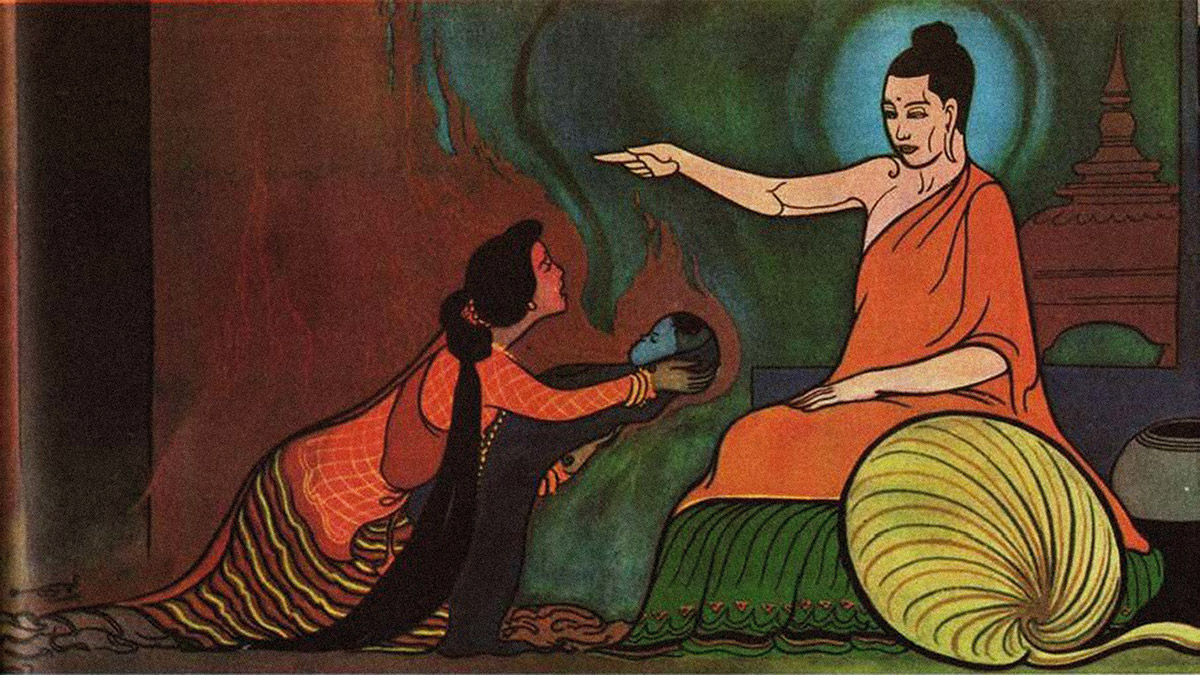In the family of care and concern, sympathy, empathy, and compassion are kin. Like relatives, these virtues may grow alongside each other, offering their unique perspectives on and responses to the human condition. While the three attributes are connected, it’s helpful to understand how they differ. Sympathy resides in our thoughts. Empathy inhabits our feelings and physical bodies. Compassion moves the heart to action.
The goddess Guanyin, “She Who Hears the Cries of the World,” is the Buddhist embodiment of these virtues. She’s sometimes depicted with a thousand arms and an eye in the palm of each hand—at the ready to see suffering, face it, embrace it, and dispel it. It’s important to have a clear understanding of the qualities Guanyin personifies so we may be inspired by them, use them to fine-tune our hearts and minds, and infuse our movements in the world with loving-kindness.
It’s also important to understand what in Buddhist terms is called the “near enemies” of these virtues—qualities that resemble, but actually impede them. I like to think of these near enemies as the shadow sides of these illuminating virtues, as they darken them. We need to know what diminishes the light and obscures our sight so, like Guanyin, we can come to see ourselves and the world more clearly.
What is Sympathy?
Sympathy is an understanding of someone else’s misfortune. At a time of so much suffering in the world, sympathy is essential; without it we run the risk of descending into selfishness, indifference, and greater despair. When we sympathize with others, it is possible to recognize their humanity—our common humanity. However, the near enemy of sympathy is pity. It has us hold others at arm’s length, feeling somehow superior to them, emphasizing their suffering rather than their agency and resilience. Sympathy’s shadow is detached, judgmental; it takes little responsibility for assisting those in need and bears little resemblance to Guanyin’s embrace.
What Is Empathy?
Empathy sprouts from the same root as sympathy—the Greek word pathos, which means suffering or feeling. However, empathy moves beyond sympathy because it involves the ability to share viscerally in someone else’s experience; to feel their joy or their pain as if it were your own. In fact, we recruit similar parts of our brains when we experience our own emotions as we do when we witness the emotions of others. When we’re empathic, we have put ourselves “in their shoes,” and also in their brains.
Yet being in another’s shoes or brains can lead us to feel overwhelmed. When confronted with the suffering of mass shootings or masses of unhoused people living on our streets, we might simply shut down because the problem seems too intractable, too big to bear, impossible to hold with even a thousand arms. Empathy in this form becomes a barrier to action. It can paralyze us.
There are other shadows that darken empathy. We humans have the tendency to feel deeply for the suffering of members of our own group, while at the same time being afflicted by a strong in-group/out-group bias. Empathy for “our own” can justify denial of or even violence against “the other.” This “us vs. them” mentality is the nefarious basis of the ills and isms that plague humanity and the planet, including colonialism, genocide, violence, oppression in all its forms, war, religious persecution, and the degradation of the natural world. As the humanitarian doctor Paul Farmer asserts, “The idea that some lives matter less is the root of all that’s wrong with the world.”
What Is Compassion?
Compassion extends beyond sympathy and empathy. It involves deep feeling plus wise action. It’s described as the “quivering of the heart” in response to another’s suffering and the movement toward alleviating that suffering. Compassion shares shadow sides with sympathy and empathy—pity and paralysis. But when compassion takes the form of meaningful action, it can counter the feeling of being overwhelmed because it allows us to channel our feelings into a concrete way of expressing solidarity and support for those in need.
There’s a Buddhist story that shines a light on sympathy, empathy, and compassion. In this story, a woman named Kisagotami has a beloved only child—an infant son—who dies suddenly. She goes mad with grief and carries the lifeless body of her child through the village, wildly beseeching her neighbors to give her the medicine that will revive him. All know that no such medicine exists and are at a loss to help her—some pity her and try to talk sense into her to no avail; others empathize but then shut their doors to her because her raw pain is too much for them to bear.
Finally, a compassionate wise elder sends Kisagotami to see the Buddha, who tells her he can give her medicine, but only after she brings back a handful of mustard seeds from a home that has experienced no death. So Kisagotami sets out again, moving from house to house. She can’t, however, find anyone who can help her, because people in every house have endured a devastating loss—of a parent, child, spouse, or beloved.
As night falls, Kisagotami’s understanding dawns. She goes into the forest to bury her son and then returns to the Buddha, brought to her senses by the power of the compassion she feels for her neighbors and herself. She understands that her grief is not unique, that she’s in the good company of all those who have also loved and lost. She understands the reality of our interconnectedness and finds solace in our shared humanity.
I recognize Kisagotami’s story from my own life. Years ago, pregnant with a baby boy, I was at the midwife’s office, when I suddenly heard a loud wailing coming from the room next door. The sounds of lamentation were like nothing I’d ever heard before—raw, primal, agonized, agonizing. My midwife rushed out of the room. When she returned a long while later, eyes red, she explained that the cries were from another patient, a mother who’d recently had a stillbirth and was back for her postpartum exam. My mind reeled; I was stunned into silence. Such a thing could happen? Could such a thing happen to me?
I walked out of the office in a daze, into the too-bright sun of the parking lot. Just steps ahead was the mother, leaning heavily on the arm of her partner, weeping, limping to their car. I clutched the arm of my own partner, feeling the dead weight of the mother’s pain in my own body. But I was overwhelmed by her anguish and felt myself recoiling. Like the villagers who closed their doors to Kisagotami, I felt the shadow side of empathy fall over me like a chill. I got into my car and shut the door to her cries. I was sympathetic to her, but I thought of her as completely different from me. My baby was healthy; my pregnancy was fine; what happened to her would never happen to me.
But months later, out of the blue, like being struck by a truck, it did happen. Unfathomably, I, too, had a stillbirth. My cries joined the chorus of cries heard by Guanyin. Over the course of those dark nights, mercifully held in the compassionate embrace of friends and family, I was able to open my heart to bereaved mothers and broken-hearted people the world over, from time immemorial to times yet to come. The following year, while I was holding my baby girl born just days before, an old friend called with the wrenching news of his wife’s stillbirth. With my two arms, I reached out across the distance to embrace them.
In the face of the suffering we’re exposed to each day—in our own and others’ lives—may we cultivate the qualities of sympathy, empathy, and compassion to do our part to alleviate the suffering of this world without turning away, without shutting anyone out.

